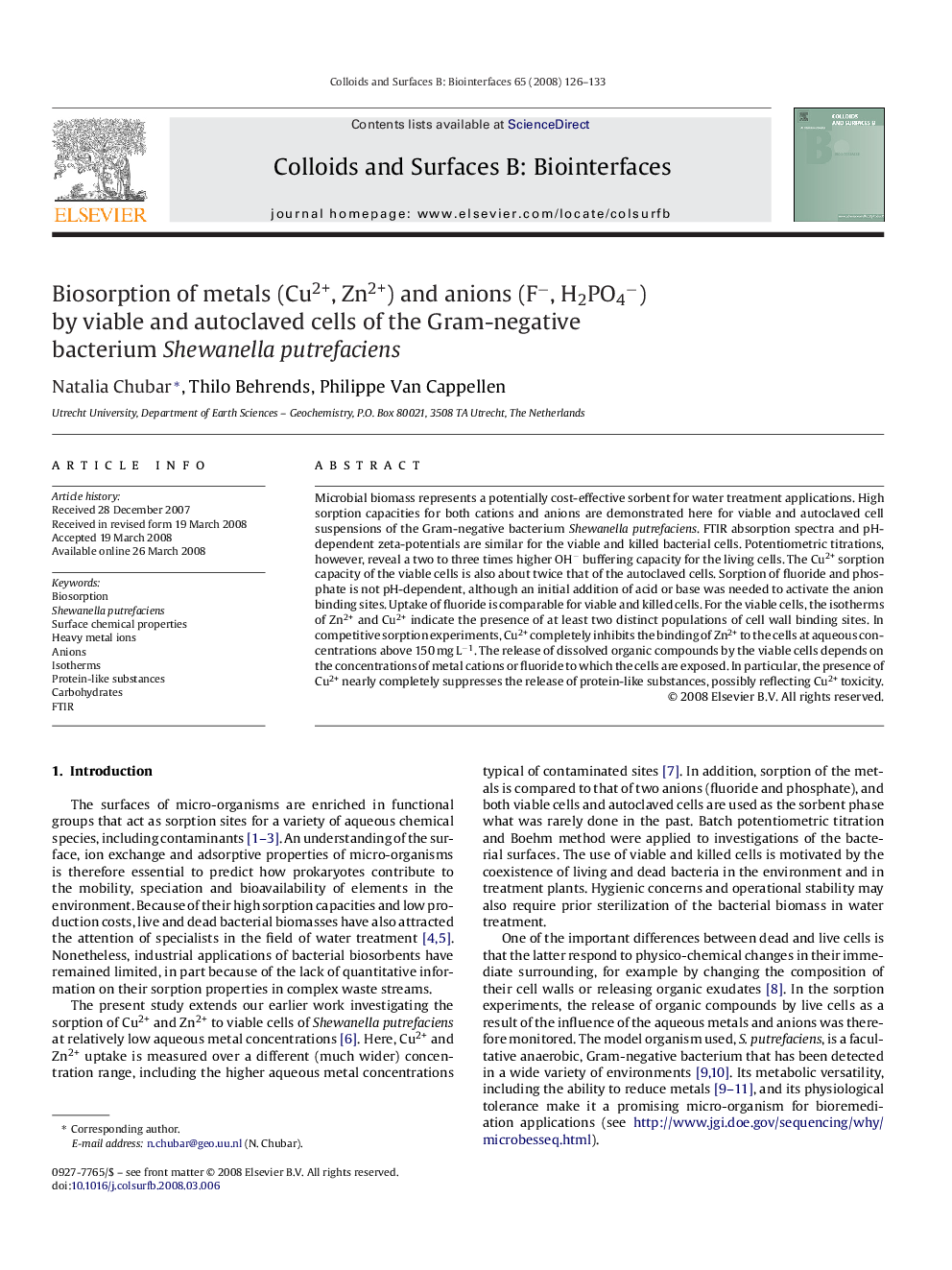| کد مقاله | کد نشریه | سال انتشار | مقاله انگلیسی | نسخه تمام متن |
|---|---|---|---|---|
| 602826 | 879995 | 2008 | 8 صفحه PDF | دانلود رایگان |

Microbial biomass represents a potentially cost-effective sorbent for water treatment applications. High sorption capacities for both cations and anions are demonstrated here for viable and autoclaved cell suspensions of the Gram-negative bacterium Shewanella putrefaciens. FTIR absorption spectra and pH-dependent zeta-potentials are similar for the viable and killed bacterial cells. Potentiometric titrations, however, reveal a two to three times higher OH− buffering capacity for the living cells. The Cu2+ sorption capacity of the viable cells is also about twice that of the autoclaved cells. Sorption of fluoride and phosphate is not pH-dependent, although an initial addition of acid or base was needed to activate the anion binding sites. Uptake of fluoride is comparable for viable and killed cells. For the viable cells, the isotherms of Zn2+ and Cu2+ indicate the presence of at least two distinct populations of cell wall binding sites. In competitive sorption experiments, Cu2+ completely inhibits the binding of Zn2+ to the cells at aqueous concentrations above 150 mg L−1. The release of dissolved organic compounds by the viable cells depends on the concentrations of metal cations or fluoride to which the cells are exposed. In particular, the presence of Cu2+ nearly completely suppresses the release of protein-like substances, possibly reflecting Cu2+ toxicity.
Journal: Colloids and Surfaces B: Biointerfaces - Volume 65, Issue 1, 1 August 2008, Pages 126–133